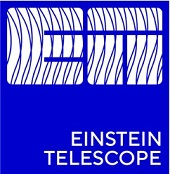Einstein Telescope (ET) is the European project for a third generation gravitational waves observatory, which will shed light on many open questions of fundamental physics and cosmology. Compared to the current, second-generation laser-interferometric detectors Advanced Virgo and Advanced LIGO, ET will achieve a greatly improved sensitivity by increasing the size of the interferometer from 3÷4 km to 10÷15 km arm length, and by implementing a series of new technologies. In particular, placing the detector underground and cooling the test masses to cryogenic temperatures will be essential to boost the low frequency sensitivity by mitigating seismic, Newtonian, and thermal noise.
ET was included in the 2021 update of the European Strategic Forum for Research Infrastructures (ESFRI) roadmap.
The investment for ET construction will be dominated by the cost of underground civil infrastructure. A preliminary costing will be based on engineering studies carried out by specialised companies employed by the teams preparing possible ET sites.
A dedicated task force was recently set up by the ET Organisation (ETO) to optimize the detector layouts of ET and the preliminary costing for the civil infrastructure while maintaining ET’s scientific performance.
The task force will examine the cost and technical risk corresponding to different options for the detector layout; the proposed layouts should allow sufficient flexibility to account for unknowns in technical design details.
The Pisa meeting will bring together instrument scientists (opticians and experts in critical technologies for seismic isolation, cryogenics, ultra-high vacuum) and engineers to generate a first update of the ET detector layout. The output from the different discussions (simulation code, figures, graphs, etc.) can be collected in the GitLab repository: GitLab .


